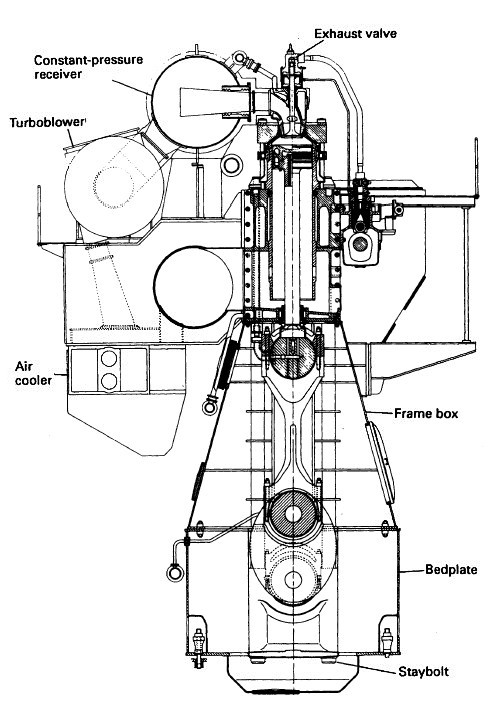
MAN B&W Marine Diesel Engine
The diesel engine is a type of internal combustion engine which ignites
the fuel by injecting it into hot, high-pressure air in a combustion
chamber.
In common with all internal combustion engines the diesel engine operates with a fixed sequence of events, which may be achieved either in four strokes or two, a stroke being the travel of the piston between its extreme points. Each stroke is accomplished in half a revolution of the crankshaft.
In common with all internal combustion engines the diesel engine operates with a fixed sequence of events, which may be achieved either in four strokes or two, a stroke being the travel of the piston between its extreme points. Each stroke is accomplished in half a revolution of the crankshaft.


